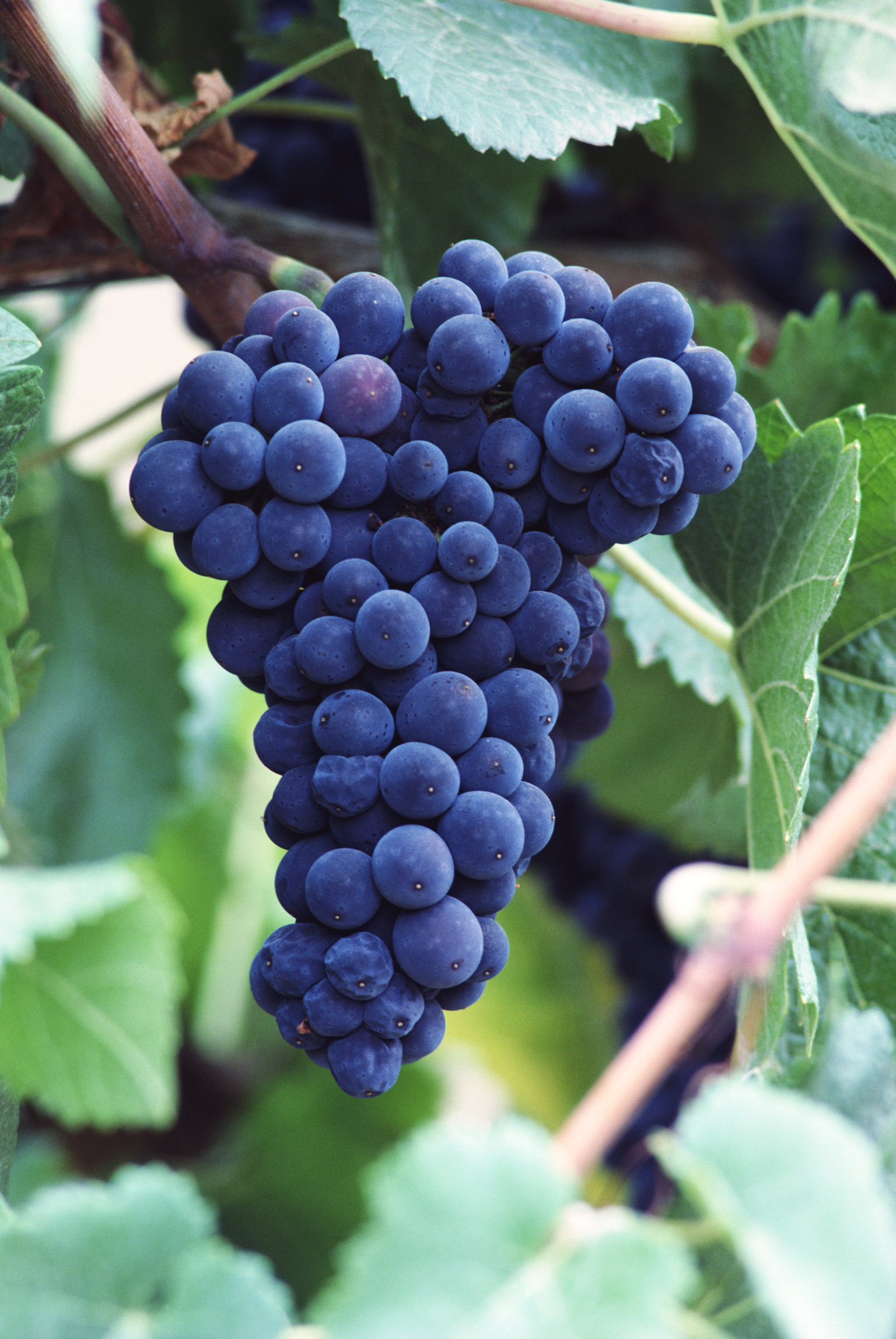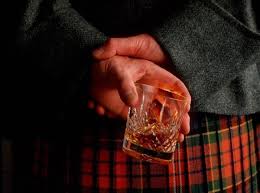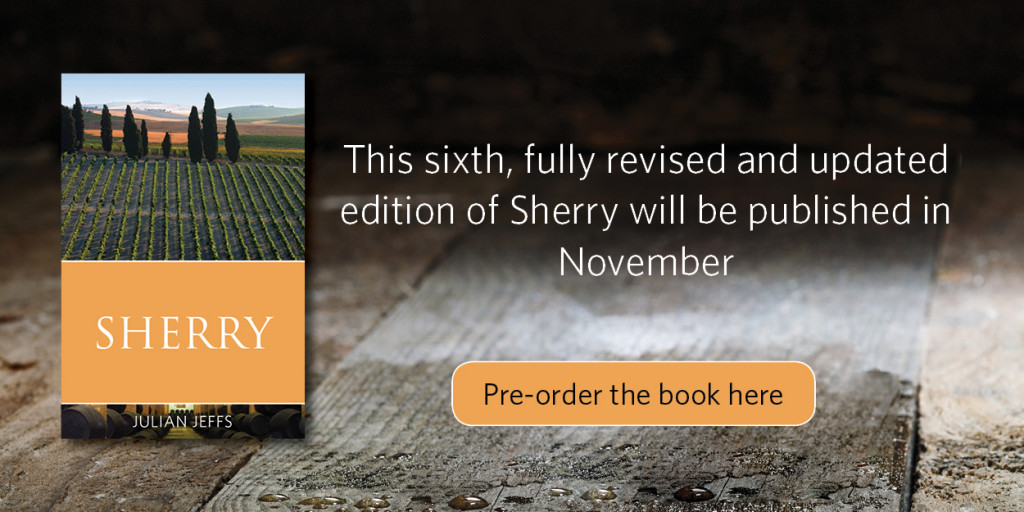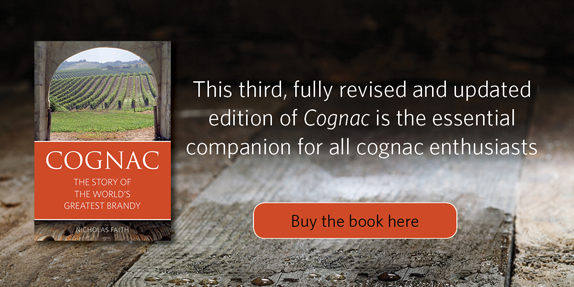Wine and spirits
Australian and New Zealand wine expertise comes to the UK
22 September 2014 by Catherine Holdsworth in Wine and spirits
To mark the Negociants UK winemakers tour, where winemakers from Australia and New Zealand come to the UK to share their passion for wine and perhaps divulge a few of their trade secrets, we’ve been thinking about how place defines the wine that it creates.
The wine trade is truly global and in Secrets of wine, Giles Kime highlights the sheer diversity of winemaking and the variety of different regions where it is produced. Could you tell the origin of your glass from just a sip? Here’s what Giles has to say:
 Wine falls into two categories: the stuff that reflects the winemaking tradition of the region where it was produced and the sort that tastes as though it could have been made anywhere in the world where the sun shines enough to ripen grapes. There’s not much wrong with the latter; the huge advances in winemaking technology in the last decade have made it possible to produce good-value wines virtually anywhere. What sets these two kinds of wine apart is something that wine buffs call ‘typicity’ – meaning that they conform to a certain style that is typical of the wine’s birthplace. How important is this quality? If wine is enjoyable to drink, surely to worry about typicity is nothing more than splitting hairs? Possibly. But a world without wines that reflect their origins would be very boring. Which would you rather do? Drive hundreds of miles through the unchanging landscape of the American plains or wind your way through the ever-changing scenery of France, Italy or Spain?
Wine falls into two categories: the stuff that reflects the winemaking tradition of the region where it was produced and the sort that tastes as though it could have been made anywhere in the world where the sun shines enough to ripen grapes. There’s not much wrong with the latter; the huge advances in winemaking technology in the last decade have made it possible to produce good-value wines virtually anywhere. What sets these two kinds of wine apart is something that wine buffs call ‘typicity’ – meaning that they conform to a certain style that is typical of the wine’s birthplace. How important is this quality? If wine is enjoyable to drink, surely to worry about typicity is nothing more than splitting hairs? Possibly. But a world without wines that reflect their origins would be very boring. Which would you rather do? Drive hundreds of miles through the unchanging landscape of the American plains or wind your way through the ever-changing scenery of France, Italy or Spain?
When it comes to wine, variety is undoubtedly the spice of life. While the consistency of ‘global’ wines might offer a convenient option for everyday drinking, the highs and lows are provided by wines that taste of the place they come from. There are parallels between winemaking and cookery. The people of every region of the world have their own tastes in food that are influenced by the available ingredients, the climate and the gastronomic tradition that has evolved over the years. Precisely the same is true of wine.
A sense of place versus a suggestion of terroir
Describing a wine as having a ‘sense of place’ could easily be confused with suggesting that it expresses terroir. Though terroir does contribute to the sense of place, the typicity of a wine has more to do with winemaking tradition – the style of wine created by techniques such as oak ageing and blending. The grim reapers of the wine world might make gloomy predictions that typical wines are being replaced with ones that have no regional characteristics, but the fact is that these two kinds of wine can coexist happily side by side.
Where to find typical wines
Although it is easy to see typicity as a quality that is peculiar to European wine
regions such as France, Italy and Spain, some New World areas are developing their own styles and winemaking traditions. For instance Sauvignon Blanc from Marlborough in New Zealand tastes very different from Sauvignon from Western Australia, and Barossa Shiraz has a style different from Shiraz made in South Africa. Here are areas where you are likely to find more typical wines that are true to local tradition than homogenous ‘global wine’.
| Old World | The New World |
| Bordeaux Burgundy The Mosel Valley The Loire Rioja The South of France Tuscany |
The Barossa Valley The Clare Valley The Hunter Valley The Margaret River The Napa Valley Sonoma |
If this has got you in the mood to find out more about wine, you might be interested to know that Infinite Ideas soon to publish a new addition to the classic wine library, the sixth edition of Sherry by Julian Jeffs. It’s available to preorder now.
What did we do this week?
19 September 2014 by Catherine Holdsworth in Business and finance, Wine and spirits
It has been a very exciting week in the Infinite Ideas office. We have signed up two new authors and are looking forward to developing our classic wine list with The wines of Austria and Spirits distilled. We have managed to stay (relatively) sober throughout the excitement however and will be updating you on these new titles over the coming months.
All good things come in threes and we have also signed up a new book to our business list, Authentic leadership. Next year is shaping up nicely!
Our author Richard Mayson won the Louis Roederer award for international wine feature writer of 2014 and Richard had a rather splendid evening at the ceremony. You can download the free ebook, Richard Mayson’s guide to vintage Port and read all about this fine wine.
Football business received a fantastic review from Back Page Football, which said ‘it could be Tsjalle van der Burg that fans hold aloft as the saviour of football.’ You can also listen to Tsjalle discuss his book and his thoughts on the future of football here.
If you’re a business leader or would like to be one in the future, you can now get your hands on a copy of 100+ management models by Fons Trompenaars and Piet Hein Coebergh.
Catherine handed in her MA dissertation and will never do homework again (that is unless anyone is willing to sponsor her PhD?). Rebecca was completely indifferent to the result of this week’s bake off and Richard admitted that he has never read The Great Gatsby.
Quiz: how well do you know whisky?
19 September 2014 by Catherine Holdsworth in Spirits distilled, Wine and spirits
Now that the referendum is over and we’ve all breathed a sigh of relief over the fact that we won’t have to change our passports or bulk-buy haggis before the price rockets, we think that a drink is in order to celebrate the United Kingdom of Great Britain and Northern Ireland. So break out your whisky and, if you’re English, relish in the fact that import tax was just a bad dream! Glass in hand, why not try this quiz from Infinite Ideas’ newly signed book Spirits Distilled, by Mark Ridgwell, to see how much you know about the national drink of Scotland.
1. In what year did an Excise Act lay the foundations of today’s scotch whisky industry?
A. 1644
B. 1707
C. 1823
D. 1827
2. Scotch blends account for what percentage of all scotch sold in the world today?
A. Over 75%
B. Over 80%
C. Over 85%
D. Over 90%
3. A mash for scotch may be distilled to what maximum level of alcohol?
A. 72% abv
B. 84.5% abv
C. 94.8% abv
D. 96.4% abv
4. Which grain(s) are permitted in the production of scotch malt whisky?
A. Barley
B. Rye
C. Corn
D. All of these grains
5. Single malts, bottled as such, gained global recognition in their own right from which decade?
A. 1880s
B. 1900s
C. 1930s
D. 1960s
6. Which of these terms is a correct and legal description of a blend of malt whiskies?
A. A vatted malt
B. A blended malt
C. A pure malt
D. An individual malt
7. Peat found in the Highlands typically contains what type of plant materials?
A. Vegetable
B. Seaweed
C. Fruit
D. Heather
8. Which region in Scotland boasts the world’s largest concentration of individual distilleries?
A. Lowlands
B. Speyside
C. Highlands
D. Islands
9. Which single malt pioneered the current popularity of single malts?
A. Glenfiddich
B. Glenmorangie
C. Glen Grant
D. Glen Scotia
10. In what year was a law passed requiring all Scotch to be aged for at least 3 years?
A. 1905
B. 1910
C. 1915
D. 1920
Answers will be posted on Monday. Good luck!

If you’re excited about the publication of Spirits Distilled, then why not take a look at the classic wine library too.
But what about the whisky?
17 September 2014 by Catherine Holdsworth in Current events, Spirits distilled, Wine and spirits
This week, Infinite Ideas signed a new book, Spirits explained by Mark Ridgewell. We love spirits, and not just the ghostly variety, so this new signing will make an excellent addition to the our series on wines and spirits. However, in all the excitement, we forgot, for just a moment, the impending Scottish referendum and were reminded about Scotland’s most profitable export, whisky.
Tomorrow the polls will be open and the future of Scotland will be decided, but what does this all mean for the whisky business? With Scotland’s future as a member of the EU still very much in doubt if the vote is a solid ‘YES’ will this mean that we will have to pay import tax on Famous Grouse?
 Whisky is as Scottish as haggis, tartan and highland cows, and the country thrives on the tourists who come every year for distillery tours and to sample their favourite spirit in its home. Whisky is to Scotland what Guinness is to Ireland. No longer will supermarket shelves be offering our good friends Bell’s, Glenfiddich and Johnnie Walker.
Whisky is as Scottish as haggis, tartan and highland cows, and the country thrives on the tourists who come every year for distillery tours and to sample their favourite spirit in its home. Whisky is to Scotland what Guinness is to Ireland. No longer will supermarket shelves be offering our good friends Bell’s, Glenfiddich and Johnnie Walker.
The drink is embedded in Scottish identity and yet with Alex Salmond unsure about which currency he will be adopting if the country votes yes (the pound, the euro, the oat?) whisky makers are concerned about the effect that the global market will have on their soon-to-be ‘priceless’ products.
Before you rush out to panic-buy your Scottish spirits in bulk, consider that the whisky business will flourish no matter what. An independent Scotland will still be providing us with the perfect nightcap (that is, unless they make an alcoholic irn bru) though it may be slightly more pricey, perhaps we will appreciate it all the more.
Visions of hordes of whisky-lovers queueing up at the Dumfries border smuggling whisky back to England is a far cry from what you can expect. But for all those who have yet to make up their mind before the polls, you may be swayed by a tipple or two. Consider the whisky. Consider the whisky drinkers. Consider yourself…on the fence?
If this final push from both sides has got you all in a flutter, you can download Nicholas Faith’s guide to cognac for free, and have yourself a drink to settle your nerves. Cometh the hour, cometh the vote.
Great sherry tasting 2014
15 September 2014 by Catherine Holdsworth in Sherry, Wine and spirits
Today is the Great Sherry Tasting 2014, run by the Sherry Institute, where sherry connoisseurs will be readying themselves to test the bouquets of their favourite wine, and perhaps discover a few new ones with delectable palates.
In just over two months’ time, the long-awaited sixth edition of Julian Jeffs’ Sherry will be available, and you’ll be able to learn all about the history of this rather underrated wine. But if you can’t wait until then, and in case you missed out on tickets to the Great Sherry Tasting and fancied giving it a go at home, we’ve got some advice on the best way to serve your sherry.
Like all wines, sherry’s raison d’être is to give pleasure. And like all great wines it gives pleasure in complex ways appealing to all the senses. As soon as it is poured into a glass it shows its colour and clarity. A lot can be learned simply by looking at it. Then comes its appeal to the nose. The bouquet of a good sherry strikes the nose while it is being poured into the glass, sometimes even from the next room. The nose is a major organ of tasting, receiving the first sensations. For this to happen the wine needs room for the volatile compounds to collect and concentrate above its surface, contained in the space defined by the glass, which should therefore taper in towards the top and be big enough for the wine only to occupy about a third of it. The little thimbles sold as ‘sherry glasses’ with the wine filled to the brim do not give it a chance. Apart from the bouquet ascending to the nose, the colour and viscosity can be appreciated. These features reveal the character of the wine and lay the foundations for the pleasure it can give in the mouth. There is a difference between aroma and bouquet. The aroma is the smell of a young wine, while the bouquet develops with age as the wine matures, giving a complexity that can be immense, subtle and complex.
Chin, chin!
Follow us on Twitter to keep up to date with Infinite Ideas and get more tips like this as we get closer to the release date of Sherry.
Ideas for London cocktail week
8 September 2014 by Catherine Holdsworth in Spirits distilled, Wine and spirits
It’s London cocktail week and whether you’re in the UK’s capital ready and waiting to sample some exciting drinks or just going to play along at home, we’ve got some tasty recipes that you can make easily for yourself. If you like these cocktails and are looking for some more ideas, download Nicholas Faith’s guide to cognac for FREE, yes, free and impress your friends with all your spirit(ual) knowledge!
Brass Monkey
A delightfully named cognac cocktail that can be traced back to the Napoleonic wars, when a common expression used by seafaring folks of the time was ‘cold enough to freeze the balls off of a brass monkey …’. The appreciation of brandy by the men of this time is what led to the creation of this cocktail. Today the concoction is still enjoyed in the smartest of cognac bars around the world.
Ingredients
2 parts VSOP cognac
½ part tawny port
½ part Benedictine
½ part fresh orange juice
3 dashes of orange bitters
ice cubes
Place the ice cubes in a tumbler glass and then stir all the ingredients together. Garnish with half a slice of orange and serve immediately.
Brandy Crusta
The precursor to the Sidecar, this is a great cocktail that’s noted for being served in a sugar-encrusted glass. Its origins can be traced back to the first ever cocktail guide by Jeremiah P. Thomas, The Bon Vivant’s Companion, published in 1862. Best served in a tulip glass or small wine glass, this easy to make cocktail is certainly one that will wow your dinner guests (they don’t need to know how simple it is to produce).
Ingredients
2 parts VSOP cognac (brand of your choice)
freshly squeezed juice of ½ lemon
1 part orange liqueur (such as Triple Sec)
½ part sugar syrup
1 lemon peel (with pith removed)
1 tablespoon crushed Demerara sugar, for the rim of the
glass
Prepare the glass by lining the rim with sugar and chilling. This is done by first wetting the rim of the glass with some lemon juice. Place the Demerara sugar on a saucer or small plate, turn the glass upside down and dip in using a twisting motion. Place the sugar-encrusted glass in the fridge for 15 minutes to cool. Put all the ingredients (except the lemon peel) into a cocktail shaker and mix well. Leave to cool. Pour into the glass and garnish with the peel of the lemon curled into the top part of the glass. Serve immediately.
Rolls Royce
As you’d imagine with such a prestigious name, the Rolls Royce certainly is royalty when it comes to cognac cocktails. But even with such a grand name, this is a simple cocktail to produce, and one that sits well on even the smartest of dinner tables.
Ingredients
3cl cognac (quality and brand of your choice – for a more
decadent cocktail go with a higher quality)
3cl Cointreau
6cl orange juice
1 egg white
ice cubes
Put the ice cubes in a tumbler or tall glass and then add the rest of the ingredients. Use a cocktail stirrer to mix well. Serve immediately.
Between the Sheets
Yeah, baby! This is one to spice up any party, and is definitely a classic cocktail. It’s also quite alcoholic, so be aware of this when sipping, as it doesn’t taste as lethal as it really is …
Ingredients
3cl cognac (quality and brand of your choice)
3cl white rum
3cl Cointreau
3cl lemon juice
1 slice of lemon
crushed ice
Place all the ingredients in a cocktail shaker and mix well. Allow to cool, then pour into a tumbler, long glass or balloon glass and serve immediately.
Good luck experimenting, please enjoy responsibly! You can also read about the history of cognac, the world’s greatest brandy in Nicholas Faith’s extensively researched book, Cognac.


